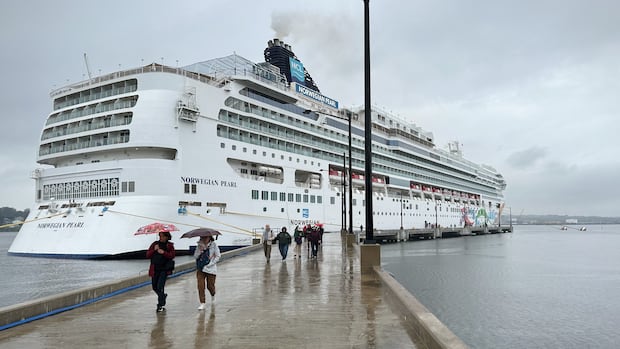Halifax Ports Face Pollution Crisis Amid Cruise Boom

Halifax is grappling with significant pollution challenges as cruise ships flood the port, bringing thousands of visitors daily. Local residents have raised concerns about the harmful emissions generated by these vessels while docked. Experts suggest that implementing shore power technology could mitigate the environmental impact, allowing ships to connect to the local electricity grid instead of relying on fuel. This shift is crucial as Canada considers expanding its port capabilities in Montreal and Churchill.
Understanding Shore Power Technology
Shore power technology offers a solution to the pollution caused by cruise ships and cargo vessels. When docked, ships typically burn heavy fuel oil and marine diesel to generate the electricity needed for onboard amenities, which releases hazardous pollutants and greenhouse gases. This process continues even while the ships are in port, contributing to local air quality issues.
Shore power allows vessels to connect to an onshore electricity source, significantly reducing their emissions. However, for this system to work, ships must be equipped with compatible connections. Currently, only a few Canadian ports, including Halifax, Montreal, Vancouver, and Prince Rupert, have implemented shore power systems, and the existing infrastructure often falls short of demand. For instance, Halifax’s shore power system can only accommodate one cruise ship at a time, despite hosting multiple vessels daily during peak season.
Globally, ports like Long Beach and Hamburg have adopted shore power more widely, creating a competitive advantage for cleaner operations. As Brent Dancey from Oceans North points out, the lack of comprehensive shore power infrastructure in Canada may lead to the country attracting less environmentally friendly ships, while cleaner vessels prefer ports with robust shore power capabilities.
The Future of Ports and Shore Power Regulations
As the global shipping industry faces increasing pressure to reduce its carbon footprint, shore power regulations are becoming more prevalent. The European Union plans to mandate shore power or alternative zero-emission technologies at major ports by 2030, with full implementation by 2035. California has also expanded its shore power requirements to include various vessel types, indicating a significant shift toward sustainable practices in the maritime sector.
In Canada, the federal government has recently fast-tracked a port expansion in Montreal, emphasizing the importance of shore power access for incoming vessels. Julien Baudry, vice-president of communications for the Montreal Port Authority, assured that all ships calling at the new terminal will have shore power availability. This proactive approach is essential for Canadian ports to remain competitive in a rapidly evolving industry.
Experts argue that investing in shore power infrastructure is crucial for the future of Canadian ports. As the shipping industry aims for net-zero emissions by 2050, ports must adapt to meet these standards. The federal government’s commitment to upgrading the Port of Churchill also highlights the need for shore power considerations in future developments. As Dancey states, “We really have to be investing in building the port of the future, which means having renewable electricity supply at these ports.”
